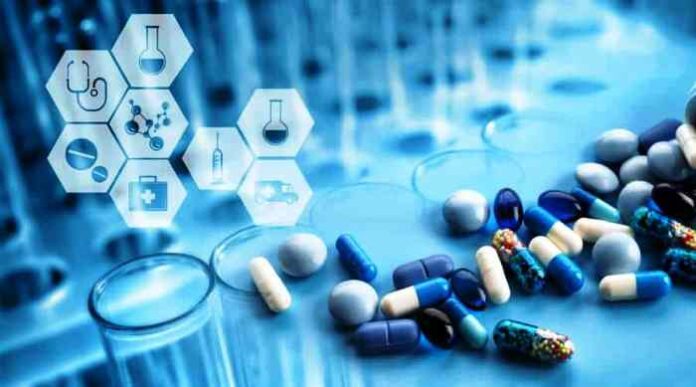New Delhi, August 18, 2023: According to Adroit Market Research, the Global Pharmaceutical Filtration Market size was estimated at USD 19.99 billion and is expected to reach USD 43.96 billion by 2030, expanding at a CAGR of 10.51% during the forecast period.
Pharmaceutical filtration is the process of ridding pharmaceutical goods and production lines of impurities, pollutants, and microbes. Assuring the safety, effectiveness, and compliance with regulatory requirements of the final product is a crucial phase in the manufacture of pharmaceuticals. The pharmaceutical manufacturing process uses filtration at different stages, including the purification of raw materials, solvent filtration, liquid clarity, sterilization, and particle removal. Pharmaceutical formulations that include undesirable particle matter are filtered to eliminate them. This might include impurities like dust, fibres, and debris that could harm customers’ health or compromise the quality of the product. Controlling microbiological contamination in pharmaceutical goods is mostly accomplished by filtration. The safety and effectiveness of medications can be jeopardized by microorganisms including bacteria, viruses, and fungi.
Globally, the pharmaceutical sector is expanding significantly, propelled by reasons including aging populations , population expansion, and the incidence of chronic illnesses. In order to assure the manufacturing of safe and effective medications, this rise results in an increase in demand for pharmaceutical filtration solutions. The pharmaceutical sector is heavily controlled, with tight regulatory requirements and quality standards. Filtration is a crucial step in the process of cleaning pharmaceutical goods of contaminants, germs, and particle matter. The need for sophisticated filtering systems is driven by compliance with regulatory requirements, the need for product quality, and product safety.
The pharmaceutical sector’s emphasis on patient safety and medication safety is what is driving the demand for strict quality control procedures. The elimination of pollutants and germs from medications, lowering the danger of contamination, and maintaining patient safety all depend on filtration. The demand for effective pharmaceutical filtering technologies is increased by this emphasis on medication safety. Technological developments are being made in the pharmaceutical filtration sector with the goals of enhancing production, decreasing contamination concerns, and improving filtering effectiveness. Pharmaceutical companies are creating and using cutting-edge filtration technologies including membrane filtration, depth filtration, and sterile filtration to improve the filtering process.
Pharmaceut ical goods are created through filtration, which is also used to create sterile liquids, suspensions, emulsions, and lyophilized powders. To guarantee product safety and efficacy, filtration is also used in medication delivery systems such as intravenous solutions, inhalation products, and parenteral drug administration. In order to increase effectiveness, throughput, and productivity in the pharmaceutical production process, filtering procedures are optimized. This includes choosing the proper filter material, improving filter designs, and validating filtering procedures to adhere to legal standards. For pharmaceutical items that need aseptic processing or are meant for parenteral administration, sterile filtration is a crucial application. In order to establish sterility and avoid contamination, it entails removing microorganisms from liquids or gases, including bacteria, viruses, and fungi. The bioburden in medicinal formulations is decreased by filtration. The term “bioburd en” describes the number of live microorganisms found in a certain product or procedure. To ensure the safety and efficacy of the finished product, filters, such as sterilizing-grade filters, are used to remove or inactivate germs.
The pharmaceutical sector places a high priority on patient safety and medication safety. The removal of pollutants, particles, bacteria, and endotoxins from pharmaceutical goods is mostly accomplished by filtration. Ef fective filtering procedures guarantee the creation of sterile and pyrogen-free medications, lowering the possibility of negative side effects and safeguarding the well-being of patients. The pharmaceutical industry’s desire for cutting-edge filtering technology is driven by the emphasis on medication safety. The pharmaceutical sector is increasingly adopting single-use technologies because of their benefits in terms of cost-effectiveness, process efficiency, and contamination control. The concerns of cross-contamination, cleaning, and sterilization associated with reusable filtration systems are eliminated by single-use filtering systems. The need for disposable filtration goods is driven by the expanding usage of single-use filtering systems in the pharmaceutical manufacturing process.
Due to its developed healthcare system, thriving pharmaceutical sector, and strict r egulatory requirements, North America is a sizable market for pharmaceutical filtration. Due to its extensive pharmaceutical manufacturing and research industries, the United States, in particular, dominates the industry. To guarantee product safety and compliance, the region also sees strong use of cutting-edge filtration technologies, such as membrane filtration and sterile filtration.
Corporate Comm India (CCI Newswire)






















